The 30th Anniversary of John Lennon’s Death
John Lennon’s fans celebrated his life last December 2010 by visiting Strawberry Fields, the Central Park garden dedicated in his honor, while a newly released interview he gave shortly before his death showed he was optimistic about his future.
On the 30th anniversary of Lennon’s murder outside his Manhattan apartment building, admirers played his music nearby at Strawberry Fields and placed flowers on a mosaic named for his song “Imagine.”
In the newly released interview by Rolling Stone, conducted just three days before he was gunned down, John Lennon complained about his critics – saying they were just interested in “dead heroes” and mused that he had “plenty of time” to accomplish some of his life goals.
The magazine also included an essay by Ono recalling her final days with her husband.
Ono released a statement Tuesday night in tribute to Lennon.
“On this tragic anniversary please join me in remembering John with deep love and respect,” Ono said. “In his short lived life of 40 years, he has given so much to the world. The world was lucky to have known him. We still learn so much from him today. John, I love you!”
Below is a look at some of the photographs from the life of John Lennon.
Linda McCartney's photo of John Lennon, left, and Paul McCartney taken during the photo session for the cover of the Abbey Road album in 1969. The photo was part of the Linda McCartney photography exhibit at the Rock and Roll Hall of Fame and Museum which ran through Aug. 8, 1999 in Cleveland. (AP Photo/Linda McCartney) #
Who Killed John Lennon?
by Fenton Bresler
“Laurel and Hardy, that’s John and Yoko. And we stand a better chance under that guise because all the serious people like Martin Luther King and Kennedy and Gandhi got shot.” — John Lennon
“Listen, if anything happens to Yoko and me, it was not an accident.” – John Lennon
Bresler begins by questioning the “lone nut” theory. Since 1835, 15 men and 2 women have attacked “nationally prominent political leaders in sixteen separate incidents.” Of those 17, only 3 have been ruled insane by law. Mark David Chapman was never found to be legally insane.
“The ‘lone nut’ theory simply does not stand up as an all-embracing explanation covering all — or even most — instances of American political assassination.”
Bresler offers the possibility that “Lennon, the politically most active rock star of his generation… was shot dead outside his own home by a killer who was merely a tool, a human gun used and controlled by others to destroy a uniquely powerful radical figure who was likely to prove a rallying point for mass opposition to the policies soon to be implemented… by the new United States government headed by Ronald Reagan.”
Bresler quotes the late radio journalist Mae Brussell, who broke the Watergate story 2 months before the Woodward-Bernstein expose’. Brussell had no doubts:
“It was a conspiracy. Reagan had just won the election. They knew what kind of president he was going to be. There was only one man who could bring out a million people on demonstration in protest at his policies — and that was Lennon.”
Bresler speculates that Chapman was a “Manchurian Candidate,” brainwashed and pre-programmed to kill on command. When the moment had arrived, Chapman received his signal and performed his task. -
The CIA and Mind Control
In April 1950, the CIA began work on PROJECT BLUEBIRD, the agency’s fledgling attempt at mind control. “Within two years this had progressed into the substantially enlarged PROJECT ARTICHOKE. According to a later CIA internal memorandum, PROJECT ARTICHOKE was intended to ‘exploit operational lines, scientific methods and knowledge that can be utilized in altering the attitudes, beliefs, thought processes and behaviour patterns of agent personnel. This will include the application of tested psychiatric and psychological techniques including the use of hypnosis in conjunction with drugs.’ In turn, only one year later, in April 1953, PROJECT ARTICHOKE became MKULTRA, the generic name for a series of on-going investigations by the agency’s Technical Services Staff.”
Some might object that pre-programming a subject to be a “killer on command” violates the common wisdom that one cannot be hypnotised to do something that is contray to one’s individual morals. Yet not all “experts” are in agreement on this. For example Milton Kline, a New York psychologist and former president of the American Society for Clinical and Experimental Hypnosis believes it is *not* impossible to create a “Manchurian Candidate.” According to Kline, “It cannot be done by everyone. It cannot be done consistently, but it can be done.”
“There seems little doubt that sophisticated techniques have now reached the stage where, if murder is desired, a killer, once programmed and ‘on hold’, can be triggered into action.”
Sirhan Sirhan
Bresler suggests that Sirhan Sirhan, the supposed lone assassin of Robert F. Kennedy, was a pre-programmed killer. Seven years after the RFK assassination, Sirhan was interviewed by psychiatrists. These recorded interviews were analyzed with the help of a Psychological Stress Evaluator (PSE), a device which measures micro-tremors in the voice. Based on the PSE, former high-ranking intelligence officer Charles McQuiston stated: “I’m convinced that Sirhan wasn’t aware of what he was doing. He was in a hypnotic trance when he pulled the trigger… Everything in the PSE charts tells me that someone else was involved in the assassination — and that Sirhan was programmed through hypnosis to kill RFK. What we have here is a real live ‘Manchurian Candidate.’”
After examining Sirhan’s PSE charts, Dr. John W. Heisse, Jr., president of the International Society of Stress Analysis, agreed with McQuiston: “Sirhan kept repeating certain phrases. This clearly revealed he had been programmed to put himself into a trance.”
Government Surveillance
During a December, 1971 rally at the University of Michigan (Ann Arbor), undercover FBI agents recorded remarks made by Lennon and others. This is only one case of many, all pointing to a pattern of consistent governmental spying upon Lennon. Under the Freedom of Information Act, Bresler obtained U.S. government files on Lennon. The files show that Lennon was under constant government surveillance, especially during the years 1971-1972. For example, in an April 10, 1972 memorandum from J. Edgar Hoover to the FBI’s New York office, Hoover orders his agents to “…promptly initiate discrete efforts to locate subject [Lennon] and remain aware of his activities and movements. Handle inquiries only through established sources… Careful attention should be given to reports that subject is heavy narcotics user and any information developed in this regard should be furnished to narcotics authorities and immediately furnished to bureau in form suitable for dissemination.”
“Lennon knew from early in 1972 that he was under constant surveillance, being followed in the streets and with his telephone tapped.” The ex-Beatle was aware of the surveillance by secret police agencies and so stated on several occasions. For example, in December 1975 he told one interviewer, “We knew we were being wire-tapped… there was a helluva lot of guys coming in to fix the phones.”
“Moral Turpitude”
One of the methods used by the U.S. government to harass Lennon was the threat of deportation. The government had extra leverage in its efforts due to a previous conviction against Lennon which charged him with “moral turpitude.” On October 18, 1968, in Britain, Lennon and Ono had been arrested and charged with possession of 1.5 ounces of marijuana. Two weeks before the bust, Lennon had been warned that the police were out to get him because he was a “loudmouth.” As a precaution, he had (as he put it) “cleaned the house out [of drugs].” Nevertheless, marijuana was found in the house by the police. According to Lennon, he had been set up. His opinion is backed up by the fact that the arresting officer was later sentenced to two years in prison for planting evidence in other cases.
In order that Ono would not be charged, Lennon “copped a plea”. Charges against Yoko Ono were dropped and Lennon was fined and found guilty of “an offence of moral turpitude.”
At the time of their arrest, Yoko Ono was pregnant and almost suffered a miscarriage. Although she was immediately hospitalized, a month later she lost the baby. “On being told the end of their child’s unborn life was near, Lennon had a tape recorder brought into the hospital room and, with a stethoscope microphone, he recorded his second son’s failing heartbeats before he died.”
Political Activism
Examples of Lennon’s political activism are seen in songs such as “Give Peace a Chance,” “Power to the People,” and “Working Class Hero.” In an interview published in *Rolling Stone* (and later as a book entitled *Lennon Remembers*), Lennon called the song “Working Class Hero” a “…song for the revolution… It’s for the people like me who are working class.”
In the interview, Lennon further states that “…the people who are in control and in power, and the class system and the whole bullshit bourgeois scene is exactly the same except that there are a lot of middle-class kids with long hair walking around in trendy clothes… The same bastards are in control, the same people are runnin’ everything… They’re doing exactly the same things, selling arms to South Africa, killing blacks on the street, people are living in fucking poverty with rats crawling all over them. It’s the same. It just makes you puke.”
“With Lennon, rock had become revolutionary — and for real. He and Yoko took part in demonstrations, they campaigned for a public inquiry into the case of James Hanratty, convicted of murder and hanged in the early 1960s… they marched for the IRA [Irish Republican Army] and they called for help for striking shipbuilders.”
The Invisible Assassins
Bresler interviewed Arthur O’Connor, the lieutenant who was commanding officer of the twentieth precinct of the New York police that dealt with Lennon’s murder. He quotes O’Connor as saying, “As far as you are trying to build up some kind of conspiracy, I would support you in that line. Like I said originally over the phone, if this gentleman [Chapman] wanted to get away with it, he could have got away with it. There was the subway across the road and no one around to stop him.”
Instead, once Chapman had accomplished his task, he calmly sat and waited for police to come.
“Why one method rather than the other, the amateur as against the professional? Because that way you avoid any awkward questions. If Lennon had been gunned down by a professional killer, the whole world would have known: such swift expert assassinations carry their own individual hallmark. It would have been obvious what had happened and, with Lennon’s history of anti-government radical political activity, there would have been [an in-depth investigation].”
“But if you program an amateur to do the job, a so-called ‘nut’, very few questions are asked.”
http://Store.StrawberryFields.net
Who Authorized
The Assassination
Of John Lennon?

by Mark R. Elsis, Lovearth.net, December 8, 2002
"Laurel and Hardy, that's John and Yoko.
And we stand a better chance under that guise…
Because all the serious people like
Martin Luther King and Kennedy and Gandhi got shot."
John Lennon
Monday, December 8th, 1980 was the warmest December 8th in the history of New York City. The temperature reached a balmy record of 64 degrees Fahrenheit that fateful day. At around 5 p.m., John and Yoko left their apartments in the historic Dakota on Central Park West and 72nd Street. They were to go to the Record Plant recording studio to supervise the transfer of some of the "Double Fantasy" album numbers to singles.
As they were leaving the Dakota to enter their limousine, they were approached by several people who were seeking autographs. Among them was a man who would be later identified as the assassin. John was asked by the assassin, to sign his copy of the album Double Fantasy, John did. There is a famous photograph of John signing Double Fantasy for the assassin.
At least three witnesses, Jose Perdomo, the outside doorman for the Dakota, an elevator operator and a cab driver who had just dropped off a passenger, saw the assassin standing in the shadows, just inside the archway of the Dakota. You can add my name, Mark Elsis, to this list also. I saw the assassin lurking in the darkness while I was driving my taxi in Manhattan that evening.
I was traveling without passengers, going north on Central Park West and made a slow left turn on to 72nd Street. As soon I made the left turn, I sensed something was wrong. I quickly slowed down to a crawl in front of the Dakota. I looked right at this guy lurking in the darkness, and I felt he was bad energy. I very nearly stopped. It was almost 10:00. I'm so sorry, forgive me John. I should have stopped. I knew there was something terribly wrong with this guy, the assassin. I was ever so close to stopping, I went back and forth, should I stop or not a couple times in the few seconds in front of the Dakota.
John and Yoko left the Record Plant at 10:40. They were on their way back home from their recording / mixing session for Yoko's song Walking On Thin Ice. At 10:49 their limousine pulled up in front of their apartments at the Dakota, they were home. It stopped at the curb. It was an absolutely beautiful evening in Manhattan, so there was no need to be driven into the courtyard, to be let off next to the safety of the lobby entrance.
Jose Perdomo, the front doorman, leaves his post to open the limousine door for John and Yoko. Yoko Ono stepped out of the limousine first and John Lennon who is carrying a tape recorder and some cassettes followed a few steps behind. As Yoko passes him the assassin, says "Hello". Just as John passes him, the man steps from the sidewalk and from his pocket he takes out a 5 shot .38 revolver armed with hollow tip bullets. He drops into a combat stance, knees flexed, with one arm supporting the other at the wrist. He says, Mr. Lennon?
Just as John turns, about 15 feet through the large arch with iron gates of the Dakota, the assassin fires two shots into the left side of his back. There's a crash of shattering glass as the bullets that pass through John's body smash into the Dakota's glass frontage. These two shots spin him around. He is now facing his assassin.
Blood is already pouring out from the first two bullets and the four wounds, as the assassin takes aim at John again. He fires three more shots. Two of the bullets smash into John's left shoulder. The other goes astray. The greatest singer songwriter and the most influential political artist of our time staggers up six steps to the room at the end of the entrance used by the concierge, said, "I'm shot," then fell down.
I'm shot he moans lying on the floor. John's been shot, screams Yoko. Jay Hastings the security man reaches under his desk and presses the alarm button, notifying the police from the nearby 20th Precinct. He then rushes to John's side and removes his blood stained glasses. Then he takes off his uniform jacket to cover him. He wants to use his tie as a tourniquet, but can't decide where to apply it. John is dying, blood pours from his chest and mouth, his eyes are open but unfocused, and he is gurgling and vomiting blood.
The first policemen at the scene were Officers Steve Spire and Peter Cullen, who were in their patrol car at 72nd Street and Broadway when they heard a report of shots fired at the Dakota. The officers found the assassin standing "very calmly" where he had been. The police said the assassin had dropped the revolver after firing it, and said he had a paperback book, J.D. Salinger's "The Catcher in the Rye."
The second police team at the Dakota, Officers Bill Gamble and James Moran, realizing John Lennon was critically injured, didn't wait for an ambulance, and took John Lennon to Roosevelt Hospital in their patrol car. Officer Moran said they stretched Lennon out on the back seat and that the singer was "moaning." Officer Moran asks, "Are you John Lennon?" and that Lennon had moaned, "Yeah." The patrol car makes a left through the red light on to Columbus Avenue and speeds down the 13 blocks to 59th Street, where it swings into the entrance of Roosevelt Hospital.
Roosevelt hospital's emergency trauma team has already been alerted. John is brought into the emergency room with virtually no pulse. The two bullets that hit him on the left side of the back had both pierced a lung and passed through his chest. A third bullet had shattered his left shoulder bone, and a fourth had hit the same shoulder and ricocheted inside his chest, where it severed his aorta and windpipe.
After an unsuccessful attempt at cardiac massage, a medical team of seven people led by Dr. Stephen Lyman labored to save John using every device and technique available. Nothing work. John Lennon the greatest singer songwriter and the most influential political artist of our time was pronounced dead at 11:15 p.m. on December 8, 1980. The official cause of death is shock produced by massive hemorrhaging. Dr. Elliott M. Gross, the Chief Medical Examiner, said after the autopsy that Lennon had died of shock and loss of blood and that no one could have lived more than a few minutes with such injuries.
Yoko Ono, crying "Tell me it's not true," was taken to Roosevelt Hospital and led away in shock after she learned her husband was dead. David Geffen later issued a statement in her behalf: "John loved and prayed for the human race. Please do the same for him."
Within minutes of the first broadcasts of the news of the shooting, people began to gather in front of the Dakota, reciting prayers, singing Lennon's songs and burning candles. I first got to the Dakota at 11:45. I was there longer than anyone on Earth that evening - 9 hours, from 11:45 p.m. till 8:45 a.m. the next morning. (Read John Lennon Day Petition)
On December 14, all around the world, people paused to stand alone or come together in silence, heeding a plea from Yoko Ono that they take 10 minutes to remember John.
CIA -- FBI -- Deranged Lone Nut Fan -- Manchurian MKULTRA Candidate
The assassin was a brainwashed hit man carrying out someone else's contract, writes Bresler, "he is in many ways as much the victim of those who wanted to kill John Lennon, as Lennon himself."
The Manchurian MKULTRA candidate assassin dropped the gun and proceeded to take out a copy of J. D. Salinger's Catcher in the Rye, and calmly started reading. The Dakota doorman, Jose Perdomo, shouted at the assassin, "Do you know what you've done?" "I just shot John Lennon," he replied, accurately enough.
"He walked past me and then I heard in my head, 'Do it, do it, do it,' over and over again, saying 'Do it, do it, do it,' like that," recalled in a BBC documentary several years after going to prison. "I don't remember aiming. I must have done, but I don't remember drawing a bead or whatever you call it. And I just pulled the trigger steady five times." The assassin described his feeling at the time of the shooting as "no emotion, no anger dead silence in the brain."
His unnatural tone sounded all-too-familiar for British lawyer and journalist Fenton Bresler, who wrote the book, Who Killed John Lennon? The assassin was a brainwashed hit man carrying out someone else's contract, writes Bresler, "he is in many ways as much the victim of those who wanted to kill John Lennon, as Lennon himself."
Prosecutors were at a loss for motive, so they opted for the cliché, the assassin did it for the attention. The troublesome American preoccupation with grabbing that elusive fifteen minutes propels many a daily-newspaper-journalist-cum-pop-sociologist into raptures of sanctimony. But Arthur O'Connor, the Detective who spent more time with the assassin immediately following the murder than anyone else, saw it another way.
"It is definitely illogical to say that [the assassin] committed the murder to make himself famous. He did not want to talk to the press from the very start. It's possible somebody could have used him. I saw him the night of the murder. I studied him intensely. He looked as if he could have been programmed."
Detective O'Connor was speaking to Bresler, and publicly for the first time. Bresler's book, Who Killed John Lennon? -- Offers the most cogent argument that the assassination of John Lennon was not the work of yet another "lone nut."
At nearly three hundred pages, John Lennon's Federal Bureau of Investigation (FBI) file reveals that he was under "constant surveillance." His apartment was watched, he was followed, and his phone was tapped. The FBI did not keep a particularly low profile around the ex-Beatle, apparently attempting to harass him into silence or at least drive him nuts, similar to the tactic they had used on Dr. Martin Luther King, Jr., just a few short, but eventful years earlier.
In late 1972, when the "surveillance" was at its peak, John Lennon told humorist Paul Krassner, "Listen, if anything happens to Yoko and me, it was not an accident."
The FBI and the Central Intelligence Agency (CIA) tracked John at from at least his "Free John Sinclair" concert in 1969 until 1976, even though by then John had won his immigration battle and dropped out of not only political activism but public life altogether. This turned out to be a five-year period of seclusion to raise his newly born son, Sean. Sean Lennon was born on October 9, 1975, his dad's 35th birthday.
Placing a person under "constant surveillance" and ordering that person executed are admittedly two very different things. Nevertheless, Bresler's point is that the government did not consider John Lennon a harmless rock 'n' roller. John's political publicity stunts such as in his and Yoko's Montreal "Bed-In" and "War Is Over" were always capable of seizing the spotlight and speaking directly to tens of millions of young people who venerated him. With unfettered access to the world's media, his power truly was immense. Because of this, in some circles he was correctly viewed as the most dangerous radical who needed to be stopped. John Lennon was the most dangerous person in the world, to those whose interest is a world under corporate military rule.
John Lennon was assassinated only four years after the intense FBI and CIA surveillance ceased. In those intermittent years, James Earl Carter was President, a Democrat who kept the two agencies more or less in check. Matter of fact, about 1000 CIA was let go under James Earl Carter's Presidency.
But on November 4, 1980, when John Lennon's first album (Double Fantasy) in half a decade was climbing high on the charts, James Earl Carter became a lame duck President. I discovered a very interesting fact about the last three major assassinations in the United States. Dr. Martin Luther King Jr., Robert Francis Kennedy and John Winston Lennon were all executed during the time of a lame duck Presidency.
President Lyndon Baines Johnson became a lame duck on March 31, 1968 when he said to a national television audience; he would not run for reelection even if the Democrats wanted him to. Four days later Dr. Martin Luther King Jr. was assassinated. Sixty-three days later, Senator Robert Francis Kennedy was assassinated after winning the California Democratic primary (RFK would have been the Democratic Presidential candidate against the Republican Presidential candidate Richard Milhouse Nixon, and RFK would have won the Presidency). On November 4, 1980 President James Earl Carter lost the Presidential election to Ronald Wilson Reagan, thus becoming a lame duck President. Thirty-four days later, the heartbeat of music for his generation, John Winston Lennon was assassinated.
In every single major assassination these black-op conspirator killers have actually had the balls to blame it on some poor deranged lone gunman. They have had a patsy or a mind controlled Manchurian candidate fall guy for the last four assassinations. President John Fitzgerald Kennedy, Dr. Martin Luther King Jr., Senator Robert Francis Kennedy, and the founder and leader of the most influential musical group The Beatles, the person who was his generations and about to be another generations leader for peace and love, John Winston Lennon.
Reagan's campaign was managed by career secret agent William Casey, who under President Reagan became the CIA's most freewheeling chief since Allen Dulles (who JFK fired). The new far-right administration would reassemble the intelligence services and grant them a cheerful carte blanche. Something quite interesting about William Casey, who just happening to die very quickly from a supposed brain tumor on May 6, 1987. He died without ever testifying in the scandal, which most certainly originated with him, the Iran Contra Affair.
The forces that tried desperately to neutralize John Lennon for at least seven years lost power in November of 1976. The Lennon's government dossier ends in that year. In 1980, as those forces were preparing to retake control of the government, "the most dangerous extremist" John Lennon emerged from retirement with the best selling album, Double Fantasy, and was promptly assassinated.
The paper trail that helps support this is the airline ticket found in the assassin's hotel room, a Hawaii to New York connection departing December 5, 1980. But the assassin had actually purchased a Hawaii to Chicago ticket to depart December 2, 1980 with no connecting flight. The ticket found after his arrest had apparently been altered. None of his friends knew that he traveled on to New York. They thought he went to Chicago for a three-day stay. Where was the assassin from December 2 through 5, 1980?
Bresler concludes that the Lennon assassination, which, as the assassin himself noted in a rare interview, "ended an era," bears similarities to another assassination that took place twelve years earlier: the murder of Robert Francis Kennedy.
Robert Francis Kennedy's apparent lone assassin, Sirhan Sirhan, and John Lennon's assassin just happened to have shared the same defense psychiatrist. But while Dr. Bernard Diamond couldn't skirt the obvious fact that Sirhan was under hypnosis (Diamond wrote it off as self-hypnosis), he labeled John Lennon's assassin a "paranoid schizophrenic."
The court disagreed. The assassin, even now, has never had more than routine psychiatric care since entering his guilty plea. He was not sent to a mental hospital, but to Attica State Prison. He was judged legally "rational."
Bresler clears up a few widely disseminated misconceptions about John Lennon's assassin. While any mention of his name is now accompanied by the phrase "deranged fan," John's assassin was anything but. He was no more or less an ardent Beatles / Lennon fan than anyone of his generation. His real rock hero was Todd Rundgren, a cynical studio craftsman who could not be further from Lennon in artistic sensibility. Notwithstanding his announcement months after the murder that he "killed Lennon to gain prominence to promote the reading of The Catcher in the Rye," he never exhibited strong feelings about the novel until shortly before the shooting. Catcher, Bresler muses, may have been used as a device to trigger the assassin's programming."
After the murder, major media ran bizarre stories of the assassin's supposed growing identification with John Lennon - at one point he even "re-baptized" himself as Lennon, according to Newsweek. These stories were all quite fascinating, but there was no evidence to back any of them up. What is true is that when the assassin quit his last job he signed out as "John Lennon," then crossed the name out.
The assassin of John Lennon was not a "loner." He was for most of his life a normally social individual and a camp counselor who had a special rapport with kids. Bresler also notes that when the assassin signed up for a YMCA overseas program, he selected an odd destination: Beirut - a perfect place, says Bresler, for the assassin, a once gentle soul, to be "blooded," that is, desensitized to violence.
A final note to the mystery of the assassin: As he was ready to go to trial and his diligent public defender was winding up six months spent assembling his defense, the accused killer suddenly decided to change his plea to guilty. His lawyer was perplexed and more than a little perturbed. But the assassin was determined. He said he was acting on instructions from a "small male voice" that spoke to him in his cell.
Bresler interviewed Arthur O'Connor, the lieutenant who was commanding officer of the 20th Precinct of the New York Police that dealt with John Lennon's murder. He quotes O'Connor as saying, "As far as you are trying to build up some kind of conspiracy, I would support you in that line. Like I said originally over the phone, if the [assassin] wanted to get away with it, he could have got away with it. There was the subway right on the corner and no one around to stop him." Instead, once the assassin had accomplished his task, he calmly sat reading Catcher In The Rye and waited for the police to come.
"Why one method rather than the other, the amateur as against the professional? Because that way you avoid any awkward questions, and everyone seems to fall for it anyway. If a professional killer had gunned down John Lennon, the whole world would have known. Such swift expert assassinations carry their own individual hallmark. It would have been obvious what had happened, and with Lennon's history of War Is Over, peace and love political activity, there would have been [an in-depth investigation]." "But if you program an amateur to do the job, a so-called 'nut', very few questions are asked."
Hinckley, Bush, Reagan Assassination, World Vision And The Assassin
Ronald Wilson Reagan was sworn into the Presidency on January 20, 1981. On his sixty-ninth day in office, March 30, 1981, Reagan was nearly killed by an assassin. The person named as the assassin was John Hinkley. His family ties were to oil. Through that oil connection, Neil Bush - Vice President George Herbert Walker Bush's son, who worked in oil [later to steal hundreds of millions through Silverdo in the Saving and Loan crisis] -- knew Scott Hinkley, (brother of John) who also worked in oil.
"Scott Hinckley, the brother of John Hinckley Jr., who is charged with shooting President Reagan and three others, was to have been a dinner guest Tuesday night [March 31, 1981] at the home of Neil Bush, son of Vice President George Bush, The Houston Post has learned."
The two families lived close to each other. They knew each other socially and financially. When the Hinkley oil company started to fail in the sixties, Bush's Zapata Oil financially bailed out Hinkley's company. It went from being Vanderbilt Oil to Vanderbilt Energy or Vanderbilt Resources in the 60s after Bush intervened. The Hinkley's had been running an operation with six dead wells but then they were making several million dollars a year after the Bush bailout. Was this some sort of a money-pass front where they were laundering money through on this phony oil operation but actually operating some type of an intelligence pay-off?
The father in that family, John W. Hinkley Sr., was also the president of the board for World Vision. World Vision is a far-right evangelical missionary operation that does missionary and "good work" operations in countries where there is a political purpose for it to be there. From its inception, it was rabidly anti-Communist and it focused on refugee populations of people running from countries that had been taken over by Communism. This was from the fifties on.
World Vision had a hand in the movement of the Cubans into the United States and other refugees of revolutionary regimes. When you're a refugee you're cut loose, basically, and pretty much fair game to be manipulated by whoever is willing to give you a hand because you don't have a home or any place to stay and somebody has got to accept you.
World Vision was able to recruit out of these mercenary populations, people who could be politically turned to their intelligence purposes. World Vision served as a penetration force -- not as visible as the military actually going in or the CIA going in - but going in as missionaries and working among the people.
This link between missionary and intelligence for capitalistic infiltration operations goes way back. It was part of the internationalism with the Rockefellers. It's talked about in the book, Thy Will Be Done, about Rockefeller, Venezuela, and Latin American Oil, the Summer Linguistic Institute, World Vision and others. But they operated in this way for a long time.
They were paid by the CIA for a long time during the Vietnam War and went into South East Asia -- Cambodia and Laos. Throughout Vietnam they were given U.S. military equipment to use. They still maintain a budget under USAID, (Agency for International Development), which was just a pass-over in order to give the CIA more cover. They ran operations through USAID. The current cover replacing that is the NED (National Endowment for Democracy), which is supposed to be how we're exporting democracy around the world.
But of course, we're exporting exactly the kind of corrupt democracy we have here, which is rigged and manipulated elections and press manipulation in order to keep in power or put in power the people that we want to be in those countries for the purpose of having our investments protected and milking what we can out of the resources and the labor available in any of those countries.
World Vision was part of that scheme and they did some nasty things. They ran the refugee camp in Sabra-Shatilla where the fascist Phalange was allowed in to kill the Palestinians. They ran the Cuban and Thai refugee camps in the United States. The assassin -- who eventually shot John Lennon -- worked at the Thai refugee camps out in Arkansas that World Vision operated there. They ran these camps brutally, forcing people into political education against Castro, refusing to feed people, beating people -- by many reports -- and bringing in Alpha 66 and Omega 7 people (the worst of the killing teams -- or murder squads -- of the anti-Castro Cubans in the United States) to run the camps in Florida, Fort Chafey in Arkansas and other places where the Cuban exiles were. These people came in and there were eventually riots in the Cuban refugee camps against their treatment there. And the eventual assassin of John Lennon just happened to work there.
Who Authorized The Assassination Of John Lennon?It took almost 22 years to figure out who most likely authorized the assassination of John Lennon, the greatest singer songwriter and the most influential political artist of our time. I believe it could have been the CIA that manipulated the assassin of John Winston Lennon, but more likely, I believe a new army of old school CIA, which was let go under President Carter, manipulated the assassin. I believe the assassin was a mind-control experiment, like all their old tricks of MKULTRA, only much more sophisticated. I believe their old boss authorized it.
The film explores the political activism that Lennon became strongly involved in with the Beatles and after the band ended. John Lennon is established as being a potential political threat to the American government, and therefore much of the film covers the theme of ‘silencing’ him and other popular figures that became involved in anti-war activism. Throughout the film the audience can see both sides of the situation: the audience sees the protests and events Lennon and Yoko Ono organised, such as the famous “Give Peace A Chance” rally and concepts such as bagism and bed peace.
We also see the increasing fear experienced by the US government and CIA. This build-up of paranoia and fear for control led to the eventual deportation notice sent to John Lennon’s house, informing him that ‘his temporary stay in the USA was now over’. The film debunks and exposes the somewhat bizarre behaviour of the CIA and police department over John Lennon and other contemporary figures’ behaviour, referring also to different modern issues like drug abuse.
The film features a montage of various different mediums. There are videos of performances of songs and interviews of Lennon at the time, recordings of Yoko Ono both present and from the late 1960s and 1970s, as well as a basic story structure of retelling the story of John Lennon’s attempts to spread a message of peace amongst the USA and, on a wider scale, the entire Western world during the Vietnam War.
The film above had its world premiere at the Venice Film Festival and its North American premiere at the Toronto Film Festival. It was released in New York City and Los Angeles, California on 15 September 2006, and had a nationwide release on 29 September. A soundtrack composed of John Lennon tracks was released by Capitol Records and EMI on 26 September 2006.Forty years after the era of Beatles dominance, any commemoration of their successes and their impact on modern culture has come to follow a certain pattern: columns are written, concerts are performed, and albums are re-mastered and re-re-released. Also, more often than not, the fingers of devout Beatles fans begin to point accusingly in different directions, each seeking the "real" reason that the Beatles broke up in the first place.
They point at Yoko Ono, John Lennon's lover, a mildly terrifying woman who many believe to have been the most divisive character in the Beatles' late years. They point at Paul McCartney, the egotistical solo-act who, at times, seemed to view the Beatles as his personal backup band. And, occasionally, they point to God, the only deity that they believe could have brought such a group together in the first place. As one might expect, much of this finger-pointing derives from a deep-seated anger based on the notion that had these forces not arisen, perhaps the band would not have parted ways. But this belief is undermined by the simple fact that the Beatles had been drifting apart musically since 1968, when they released a magnificent yet scattered collection of some of the most beautiful songs that each of the band's songwriters had ever written: The White Album.The White Album is in many ways no album at all. Rather, it is a collection of individual portfolios, all faithfully clumped under one unifying title: The Beatles. The songs were written during the spring of 1968, when the Beatles made their famous trip to India to practice transcendental meditation with the Maharishi Mahesh Yogi. The band members, fatigued from hours of meditation and indigestion, would retreat separately into the privacy of their huts and work on their music. During this period, the Beatles' songwriters wrote some of their most profound and personal songs. John Lennon wrote "Dear Prudence," "Julia," and-according to rumor-even began crafting "Jealous Guy." Paul McCartney penned "Blackbird," "Mother Nature's Son," and "I Will." And George Harrison wrote what many consider to be his finest work: "While My Guitar Gently Weeps."
The Beatles may have produced the songs together in joint recording sessions, but the songs themselves were very much the product of three increasingly different artists. Long gone were the days in which Lennon and McCartney would lock themselves in a room and emerge with an album full of hits. Gone as well were the days in which one writer would add the missing piece to the other's nearly perfect puzzle. With The White Album, even the untrained ear could differentiate the optimistic pop folk of Paul McCartney (e.g., "Martha My Dear" and "Back in the U.S.S.R.") from the angst-ridden sighs of John Lennon ("I'm So Tired" and "Happiness is a Warm Gun"). Their two styles were becoming so distinct that it now seems comical that the songs were published under the joint name, Lennon/McCartney. These artists were growing apart, and during the recording sessions of The White Album, it became clear that the Beatles were not just growing apart musically.
The infighting that came to characterize the Beatles' last few years in the studio really began during the recording of The White Album. With more time and experience in the studio, each of the Beatles had developed a stronger opinion of how a certain song should be produced. Quarreling became so commonplace—and heated—that at one point drummer Ringo Starr abruptly left the studio during the recording of "Back in the U.S.S.R." Paul McCartney is credited for the drumming on that track. At another point, George Harrison brought guitarist Eric Clapton into the studio, in part to record the solo for "While My Guitar Gently Weeps," but also to help temper the band's intense fighting. Many of EMI's engineers and studio workers, professionals who had worked alongside the Beatles since the earliest days in the studio, began to resign, stating that they could no longer tolerate the band's infighting. Can you imagine what it would take to make you walk out of a Beatles recording session?Beatle John Lennon, right, and Yoko Ono are shown circa 1969 at an unknown location. (AP Photo) #
Beatle John Lennon waves his marriage certificate as his bride, Japanese artist Yoko Ono, stands at his side after their wedding at the Rock of Gibraltar on March 20, 1969. They are about to board a chartered jet to Paris where they will honeymoon. (AP Photo) #
Beatle John Lennon and his wife, Yoko Ono, right, hold a bed-in for peace in room 902, the presidential suite at the Hilton Hotel in Amsterdam on March 25, 1969. The newlyweds, holding solitary tulips, begin a seven-day Love-In to protest against war. (AP Photo) #
John Lennon and his wife Yoko Ono share an Eskimo kiss (rubbing noses) during an interview in London, Feb. 9, 1970. Both had their hair shorn in Denmark to be auctioned off in London. The proceeds went go to the Black Power organization in Britain. (AP Photo/Bob Dear) #
John Lennon and his wife Yoko Ono speak to news media on their arrival at New York's Kennedy Airport, June 1, 1971. The trip to New York is part of a bid by the Lennons to gain custody of Yoko's seven year old daughter Kyoko. (AP Photo/Ron Frehm) #
A photo of John Lennon which was part of the Rock & Roll Hall of Fame exhibit John Lennon: The New York City Years. (PRNewsFoto/Rock & Roll Hall of Fame Annex) #
Former Beatle John Lennon and his wife Yoko Ono sing during a demonstration by about 500 in front of British Overseas Airways Corp. offices on Fifth Avenue in New York, Feb. 5, 1972. Demonstrators called for the withdrawal of British troops from Northern Ireland. (AP Photo/Ron Frehm) #
Former Beatle John Lennon, left, and his wife Yoko Ono, leave the Immigration and Naturalization Service, at 20 West Broadway, March 16, 1972, New York. (AP Photo/Anthony Camerano) #
Former Beatle John Lennon performs during a charity concert to benefit mentally challenged children at Madison Square Garden, Aug. 30, 1972, New York. (AP Photo/Dave Pickoff)
John Lennon and his wife, Yoko Ono, arrive at The Hit Factory, a recording studio in New York City on Aug. 22, 1980. (AP Photo/Steve Sands)
This photo provided by Swann Auction Galleries shows John Lennon and Yoko Ono in December 1980 on the last day of Lennon's life. An original copy of the photograph, taken by Annie Liebovitz for Rolling Stone magazine, was auctioned on Oct. 19, 2010 in New York. (AP Photo/Swann Auction Galleries, Annie Liebovitz)
Police examine entrance alcove to the Dakota Apartment Building in New York, Monday, Dec. 8, 1980 after John Lennon was shot and killed as he returned home to the building. Bullet holes can be seen in the glass in the door. (AP Photo/Handschuh)
John Lennon News And Articles Archive
Strawberry Fields: Keeping The Spirit Of John Lennon Alive
Who Authorized The Assassination Of John Lennon?
John Lennon Videos At YouTube.com
Vatican Forgives Lennon For Remark About Jesus Christ
Lennon In TV Ad 28 Years After His Death
A Message From John Lennon (video for LapTop.org ad)
Beatles Hit To Be Played In Space
Staggering £24,000 Bid For John Lennon's Hair (Video)
John Lennon's Assassination by Jerry Mazza
John Lennon's MI5-FBI Files by Jon Weiner
Lennon Remembered December 2005 BBC
Fans Can Reimagine A Working Class Hero
The Night John Lennon Died by Henry Marchand
Lennon Lives Forever by Mikal Gilmore
Film To Explore The Mind Of John Lennon's Killer
Anniversary Of John Lennon's Death Looms
Lennon Rolling Stone Cover Named No. 1
Lennon-Ono Photo Deemed Top Magazine Cover
The 'Imagine' Documentary Gets Spruced Up
Lennon's Forgotten Album by Jacqueline Trescott
Yoko Says John And I Were Rebels by Mark Sage
Imagine That Musical Inspired By John Lennon
All You Need Is Love June 25, 1967
Mae Brussell On The Assassination Of John Lennon
Woman Discovers Her Past Life With John Lennon
Brandwood John Lennon Downloads
Lennon Letter That Put Damper On Reunion by Ian Leonard
McCartney Angry With Onos Beatles Song Ban
Shoplifting Lennon Had Catholic Tastes by Will Batchelor
Help End Hunger In Florida Imagine Special License Plate
Remembering John Lennon by Ron Jacobs
Remembering December 8, 1980 by Lydia Lunch
The Tonight Show: May 14, 1968 Guest Host: Joe Garagiola
The Murder Of John Lennon by Robert Fontenot
John Lennons Strawberry Fields Inspiration To Close
The Legacy of John Lennons Cultural Significance
New Keeper For John Lennon Home
John Lennon To Challenge For Christmas Number 1
Dear John, You Were Always Among Us
Imagine That! A New John Lennon Musical
John Lennon One Of Ten Greatest Britons
Blair Warns Of Serious Iraqi Threat Amid Lennon Song
John Lennon Assassination Motive
John Lennon: His Family and Early Years
John Lennons "In My Life" Top Song
Who Killed John Lennon? by Fenton Bresler
Washington Killed Lennon, Says Son Sean
The Assassination Of John Lennon
Julian Lennon Reflects On John
Original BBC Video Report On Lennons Death
Ono Unveils John Lennon Airport
Mendips: The Childhood Home Of John Lennon
Yoko Buys Lennons Childhood Home
SpookyLyrics In Lennons Last Songs
The FBI Is The Catcher In The Rye
Fans Remember John Lennon 20 Years After His Death
Castro Unveils Statue Of Lennon In Havana On 12/8/2000
Nowhere Man: The Final Days Of John Lennon
Parole Denied For John Lennons Killer
December 1980 New York Times Story
Last Will And Testament Of John Winston Ono Lennon
Peaceful And Politically Outspoken Artists
John Lennon News And Articles Archive
The Greatest Song Ever Written
Imagine no possessions, I wonder if you can,
No need for greed or hunger, a brotherhood of man,
Imagine all the people, sharing all the world.
You may say I'm a dreamer, but I'm not the only one,
I hope someday you'll join us, and the world will live as one.
John-Lennon.net | JohnWinstonLennon.comBBC News
John Lennon
Shot Dead
by Peter HobdayJohn Lennon
Audio Page
CBS News
Former Beatle
John Lennon Shot
And Killed
by John Bohannon
and Stephanie Shelton
John Lennon
Interviews And Spoken Words Recordings
The Murder Of
John Lennon
Photographs of
John and Yoko
by Allan TannenbaumJohn Lennon and
Yoko Ono Photographs
by Bob GruenPhotographs of
John Lennon,
Yoko Ono, and Sean
by Sanford Kreger
1957- 1970
The Beatles
Bio and Discography
JohnPaulGeorge
AndRingo.com
1968
Unfinished Music, No. 1: Two Virgins1969
Life with the Lions: Unfinished Music #21969
Wedding Album1969
Live Peace in Toronto1970
John Lennon
Plastic Ono Band
1972
Sometime in
New York City1975
Shaved Fish1981
John Lennon Box Set1982
John Lennon Collection1986
Live in New York City1986
Menlove Ave.1988
Imagine: John Lennon
[Original Soundtrack]
1990
Lennon1997
Lennon Legend:
The Very Best of
John Lennon
1998
Wonsaponatime1999
Legend Box1999
Bedism2001
The Legends Collection
2001
Milk and Honey
[Bonus Tracks]
2003
Lennon Legend DVD
Yoko Ono, center, is aided by a policeman and David Geffen, right, of Geffen Records as she leaves Roosevelt Hospital in New York late Monday night, Dec. 8, 1980 after the death of her husband John Lennon. Lennon was shot outside his apartment in New York after returning from the recording studio. (AP Photo/Lyndon Fox)
A crowd gathers at the scene in front of the Dakota apartments in New York City, where John Lennon was shot and killed, Dec. 8, 1980. (AP Photo/David Handschuh) #
A Beatles' fan sits outside John Lennon's apartment house in New York, Dec. 9, 1980, the night after Lennon was murdered as he entered the building. (AP Photo/Ray Stubblebine) #
Anchorwoman Jane Pauley of NBC's "Today" show, left, breaks down in tears at the end of a half-hour memorial tribute to musician John Lennon, Dec. 9, 1980, as Tom Brokaw looks on. Lennon was shot and killed the night before outside his apartment building. (AP Photo/Roberto Borea) #
A crowd gathers on the steps of the Lincoln Memorial in Washington, Dec. 10, 1980 for a vigil for John Lennon, who was slain in New York Monday night. (AP Photo/Charles Tasnadi)
An unidentified man adjusts one of the wreaths that cover the wrought iron front gate to the Dakota apartment building where John Lennon lived until he was murdered as he entered. Fans continued to hold an impromptu vigil, Dec. 10, 1980. (AP Photo/Lyndon Fox)
People jam the street at Central Park West and 72nd Street in New York, just outside the Dakota apartment house where John Lennon lived, Dec. 14, 1980, after leaving a memorial service held at the bandshell in Central Park, across the street. Lennon was murdered as he entered the building at left on Monday, December 8. Police estimated the crowd at 50,000 to 100,000. (AP Photo/David Bookstaver)
An estimated crowd of 2,000 people gather in front of Trinity Church in Boston, Sunday, Dec. 14, 1980 for a ten minute silent vigil to honor the death of John Lennon. Songs of the former Beatle who was murdered in New York were played over a loud speaker system as the crowd milled around after the service. (AP Photo/Martell) #
A woman comforts a man who is crying, Dec. 14, 1980, in Seattle as the two took part in a somber memorial to John Lennon, who was murdered in New York, December 8. (AP Photo/Gary Stewart) #

Yoko Initiates New Peace Prize
Yoko Ono, widow of the late Beatle John Lennon,
has inaugurated her own peace award by giving
$50,000 prize money to Israeli and Palestinian artists.Yoko Discusses John's Life
And The New Lennon Legend DVD
People participating in tribute to the slain musician John Lennon wave the peace sign and sing "Give Peace A Chance" at New York's Central Park, Dec. 14, 1980. An estimated crowd of 50,000 to 100,000 people took part in the vigil. (AP Photo/Carlos Rene Perez) #
Let's Be Like John And Yoko
Song, Lyrics and Vocals
by Lori-ann Latremouille
All Instuments, Recorded, Produced
Scenes during John Lennon tribute in New York's Central Park, Dec. 14, 1980. (AP Photo)
Yoko Ono, widow of John Lennon, buries her face in her hands during ceremonies in New York's Central Park, dedicating a portion of the park as Strawberry Fields after the title of one of the ex-Beatles songs, Wednesday, March 21, 1984, New York. (AP Photo/Rene Perez) #
John Lennon of 'The Beatles' is seen here in December 1980. This image was taken just a few days before his assassination. (AP Photo) #
This limited editon photograph entitled "Season of Glass", by Yoko Ono, taken in 1981 and printed in 1994, showing John Lennon's blood covered glasses from his assassination, placed on a table with a glass of water, and taken in the couple's Dakota apartment overlooking New York's Central park, was made available in London, Friday April 12, 2002, to be sold by auctioneers Bonhams in London, scheduled for April 17. The photograph, one of six, was expected to fetch between 8,000 and 10,000 Pounds (US$ 11,440 and 14,300) in aid of artists' charity. (AP Photo/Yoko Ono, Bonhams)

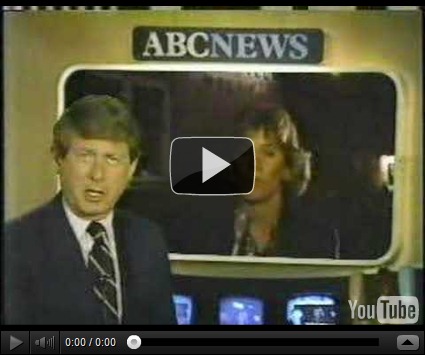

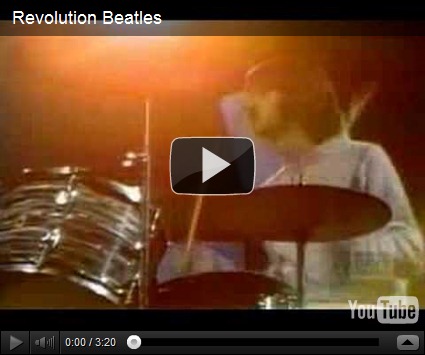

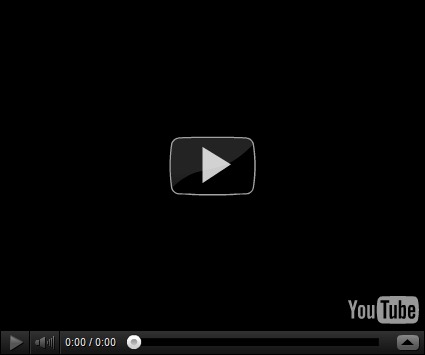
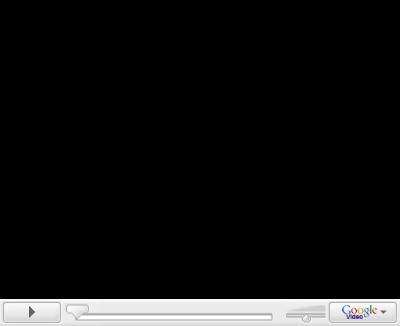



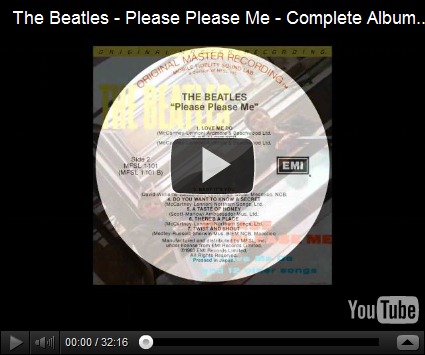

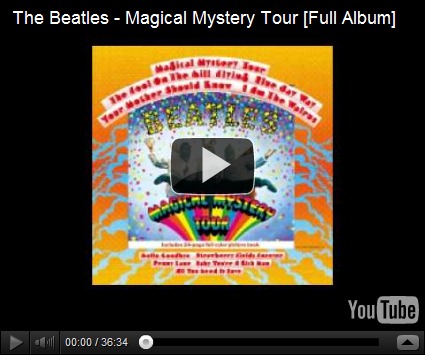




























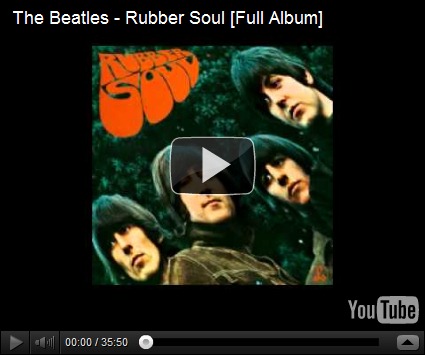

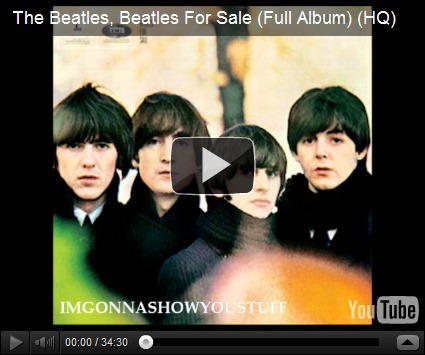

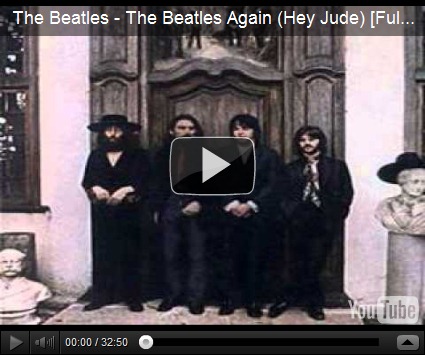
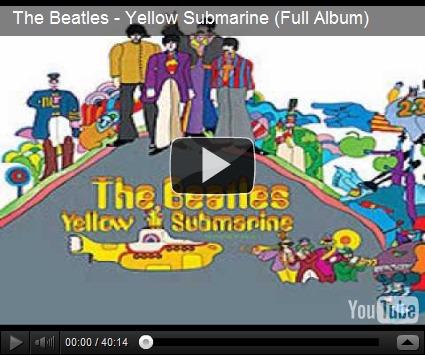

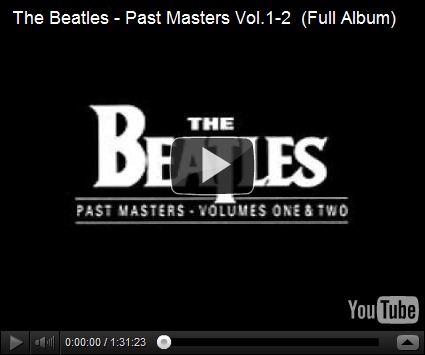
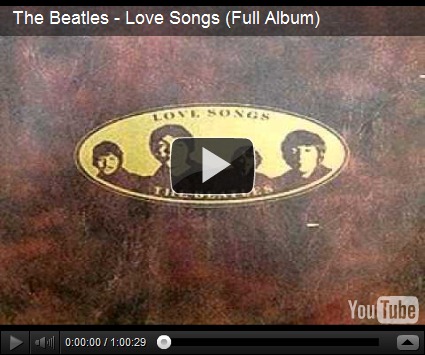









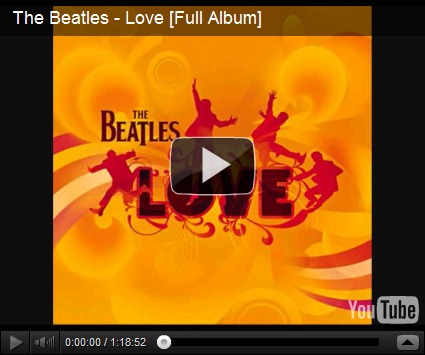
No comments:
Post a Comment